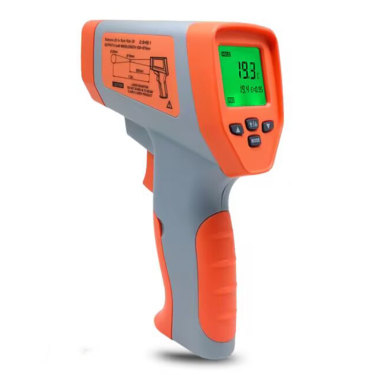
# Digital Cooking Thermometer: Essential Tool for Perfect Meals
## Why Every Kitchen Needs a Digital Cooking Thermometer
Cooking is both an art and a science, and achieving perfect results often requires precise temperature control. A digital cooking thermometer has become an indispensable tool for home cooks and professional chefs alike. Unlike traditional analog thermometers, digital versions provide quick, accurate readings that help ensure your food is cooked to perfection every time.
## The Benefits of Using a Digital Cooking Thermometer
### 1. Precision and Accuracy
Digital thermometers offer superior accuracy compared to their analog counterparts. They can measure temperatures within a fraction of a degree, which is crucial for delicate dishes like soufflés or when cooking meats to specific doneness levels.
### 2. Speed of Reading
Most digital thermometers provide readings in just 2-3 seconds, allowing you to check temperatures quickly without losing heat from your oven or pan. This is especially valuable when working with time-sensitive recipes.
### 3. Versatility
Modern digital cooking thermometers can be used for:
– Checking meat doneness
– Monitoring candy and chocolate temperatures
– Testing oil for frying
– Ensuring safe food storage temperatures
– Baking applications
## How to Choose the Right Digital Cooking Thermometer
When selecting a digital cooking thermometer, consider these factors:
### 1. Temperature Range
Look for a thermometer that covers the range you’ll need for your cooking style. Most quality models range from -40°F to 500°F (-40°C to 260°C).
### 2. Probe Type
Keyword: cooking thermometer
Consider whether you need:
– Instant-read probes for quick checks
– Leave-in probes for continuous monitoring
– Foldable probes for compact storage
### 3. Additional Features
Some useful features to look for include:
– Waterproof design
– Backlit display
– Programmable alarms
– Wireless connectivity
– Magnetic attachment for storage
## Proper Use and Maintenance Tips
To get the most from your digital cooking thermometer:
Always insert the probe into the thickest part of the food, avoiding bones or fat pockets. For meats, check multiple spots to ensure even cooking. Clean the probe thoroughly after each use with warm, soapy water, being careful not to submerge the display unit unless it’s specifically designed to be waterproof. Store your thermometer in a protective case to prevent damage to the probe.
## Common Mistakes to Avoid
Even with a high-quality digital thermometer, mistakes can happen:
1. Not allowing the thermometer to stabilize before reading
2. Checking temperature too frequently and losing oven heat
3. Placing the probe incorrectly in the food
4. Forgetting to calibrate the thermometer periodically
5. Using the same thermometer for raw and cooked foods without proper cleaning
## The Impact on Food Safety
Beyond perfect cooking results, digital cooking thermometers play a crucial role in food safety. They help ensure foods reach safe internal temperatures to kill harmful bacteria:
– Poultry: 165°F (74°C)
– Ground meats: 160°F (71°C)
– Pork and whole cuts of beef: 145°F (63°C)
– Fish: 145°F (63°C)
– Leftovers and casseroles: 165°F (74°C)
Investing in a quality digital cooking thermometer is one of the smartest decisions you can make for your kitchen. It takes the guesswork out of cooking, improves food safety, and helps you achieve restaurant-quality results at home. Whether you’re a beginner cook or an experienced chef, this simple tool can elevate your culinary skills and give you confidence in the kitchen.